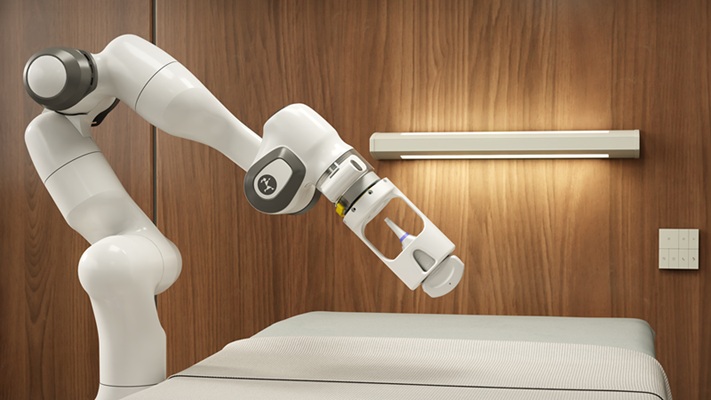Global Medical Flat Panel Detector (FPD) Market Sees Increasing Adoption of Wireless Flat Panel Technology
Posted on 14 Mar 2022
The global medical flat panel detector (FPD) market recorded an increase of 4% in unit sales in 2020 to reach a market size of just under 70,000 units, although revenues declined by almost 10% to USD 2.1 billion. The market fluctuations were similar to those witnessed in the X-ray modality markets, with static FPDs used primarily in fixed digital radiography (DR) rooms and mobile DR registering a 10% year-on-year growth. The growth was driven purchases of mobile X-ray systems for diagnosis of pneumonia as an indicator of COVID-19 by healthcare providers across the world. Conversely, the market for dynamic panels, often used for fluoroscopy, surgical and interventional procedures, fell sharply with units down 18% from 2019 to 2020 as elective surgeries were postponed or cancelled.
These are the latest findings of Signify Research (Cranfield, UK), an independent supplier of market intelligence and consultancy to the global healthcare technology industry. Signify predicts the medical FPD market to reach 85,000 units by 2025. However, as average selling prices are expected to continue to fall, market revenues are projected to decline. In 2021, there was a shift in market dynamics with the demand for static panels used in mobile radiography declining, as the surplus demand in 2020 had been met during the initial waves of the pandemic. However, as elective procedures commenced once again in 2021, the demand for dynamic panels for mobile C-arm and interventional applications increased. In 2021, unit sales of dynamic panel increased by just under 15%, almost returning to pre-pandemic levels, according to Signify.

The demand for wireless technology continues to increase in applications such as fixed and mobile radiography, especially in the developed markets where benefits such as increased workflow capabilities are widely recognized. The share of wireless detectors in all FPD unit sales stood at 53% in 2020 which Signify forecasts to grow to 61% by 2025. Physical parameters such as detector weight, extended battery life, and liquid damage protection also play a role in the purchasing process, although these factors are typically a lower priority than image quality and dose reduction. Purchasers are also paying attention to the pixel resolution and detective quantum efficiency (DQE). Manufacturers of FPDs are developing thicker scintillator layers and increasing the DQE level possible with their detectors.
Suppliers of FPDs are developing new products that have reduced scatter, lower noise, higher resolution and require lower dose exposure, a key consideration for healthcare providers and increasingly for patients as well. A combination of these features can reduce the need for retakes and increases clinical precision, enabling imaging departments to perform more efficiently. Another key consideration when purchasing FPDs is the reliability and durability of the panel. Providers are demanding more robust, reliable panels, with a greater return on investment before replacement is required. As a result of this, providers are requesting service contracts or extended warranties to support increasing the lifespan of the detectors.
Cesium iodide is the gold standard for medical imaging FPDs, but limited demand for gadolinium oxysulfide (Gadox) panels remains. Cesium iodide panels are more sensitive and produce higher quality images than Gadox equivalents, but come with a higher associated cost. The focus on reducing radiation dose in Western Europe and North America is limiting the demand for Gadox panels. However, they continue to be sold in some price sensitive markets across Latin America. Signify expects the demand for Gadox detectors to decline throughout the forecast period to 2025. As the prices of cesium iodide panels become more affordable, these panels are becoming more accessible to a wider range of customers. In addition, further acknowledgement of the dose optimization benefits of cesium iodide FPDs in the emerging countries will drive the adoption of this panel type. Signify anticipates the demand for Gadox panels to be maintained beyond the forecast period by smaller clinics and independent medical imaging facilities where cost is the primary consideration.
The medical FPD market remains highly fragmented and competitive, with 15 vendors having at least a 2% market share each. Chinese FPD vendors gained market share in 2020, due to increased production and surplus inventory for supply to mobile X-ray system manufacturers. Chinese FPD companies continue to drive an aggressive price war, forcing international FPD vendors to re-evaluate supply chains and open production facilities in lower cost countries such as China. In the coming years, Signify expects the developing markets, such as Latin America, Africa and parts of Asia, to provide a key growth opportunity for vendors with cost-efficient FPDs. With most countries in these regions having large installed bases of analogue or computed radiography systems, Signify expects continued digitalization as the affordability of digital X-ray systems continues to increase.
As the low-end FPD market continues to become saturated and the price war continues, with newer Asian FPD vendors increasing market presence globally, Signify expects the margins for FPD vendors to be increasingly at stake. After years of double-digit price erosion, Signify expects medical FPD prices to stabilize with only single-digit price annual declines through to 2025. As a result, FPD vendors are progressively investing in research and development to upgrade their product lines to showcase latest hardware innovation and establish a niche. Such developments include IGZO, flexible detectors, photon counting and addition of AEC chambers on the detectors themselves. The target markets for these higher-end FPD products include developed countries and high-end hospitals where clinical precision is still paramount.
Related Links:
Signify Research














